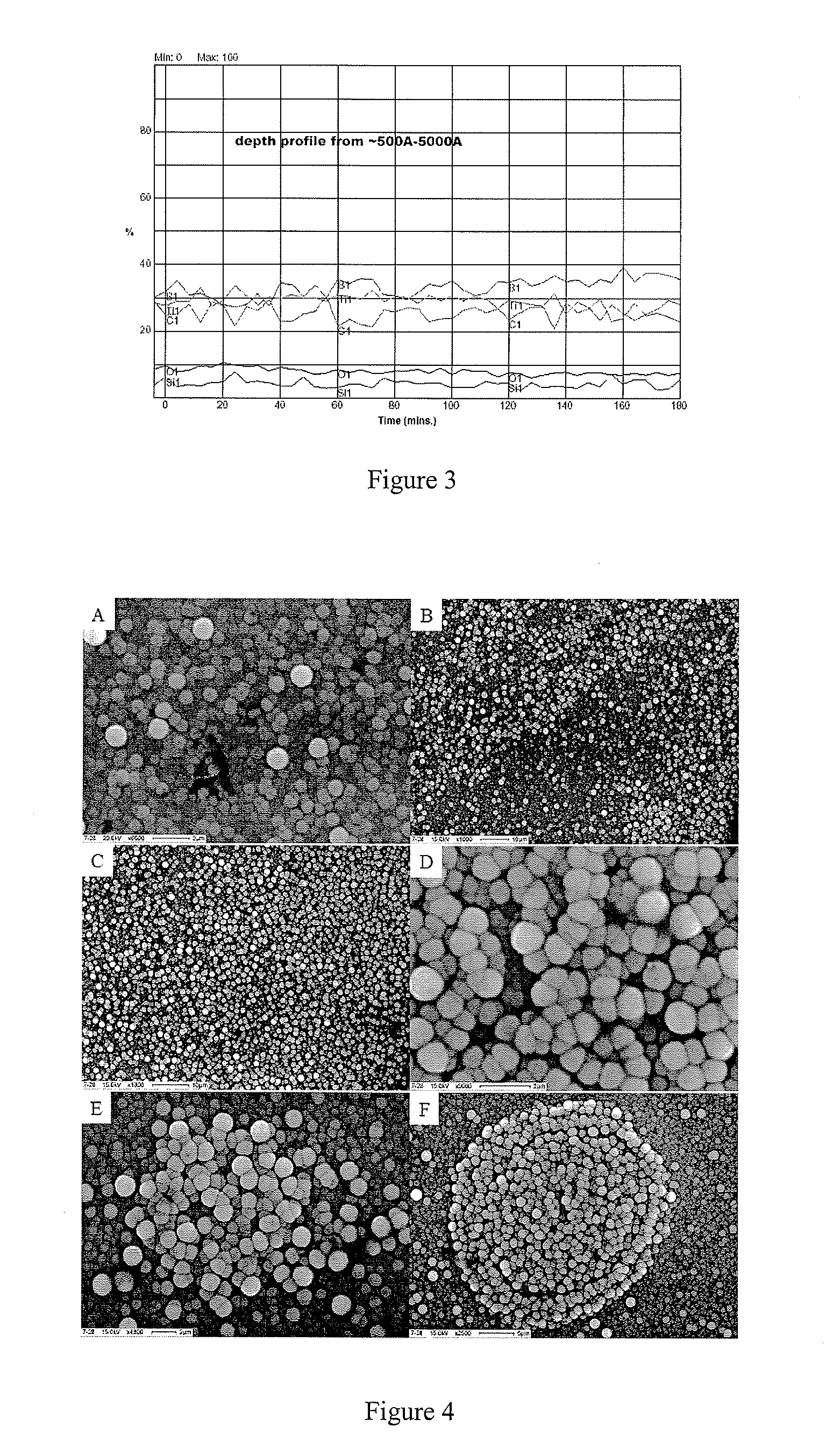Systems and Methods of the Formation of Solid State Metal Boride and Oxide Coatings
a technology of metal boride and oxide coating, which is applied in the field of metal boride coating, can solve the problems of not being able to be generalized in any sense, requiring very high temperatures, and pure metal boride materials are both exceptionally difficult to prepare and analyze. , to achieve the effect of convenient implementation
- Summary
- Abstract
- Description
- Claims
- Application Information
AI Technical Summary
Benefits of technology
Problems solved by technology
Method used
Image
Examples
example
[0035]With regard to the aerosol deposition involving titanium (IV) chloride and Decaborane(14), a 0.01 M solution of decaborane (0.1 M borane) was prepared in dry, degassed acetonitrile in a Schlenk flask under an inert atmosphere. One opening of the Schlenk flask was attached to the liquid entry tube of the nebulizer and the other was attached to a nitrogen gas inlet for pressure equalization. The nebulizer was aligned to spray into an aerosol / liquid separation chamber. In a 3-necked, 250 mL flask under an inert atmosphere, 10 mL of titanium(IV) chloride were added. The flask was then connected in line with the carrier gas and a hot wall deposition apparatus. The tube furnace of a hot wall deposition apparatus was equipped with an external chromel-alumel thermocouple for accurate temperature control. The cooling / collecting tube was immersed in a liquid nitrogen bath to cool the heated compounds before being vented into the hood. The tube furnace was first heated to between 900°-95...
PUM
| Property | Measurement | Unit |
|---|---|---|
| Temperature | aaaaa | aaaaa |
| Temperature | aaaaa | aaaaa |
| Temperature | aaaaa | aaaaa |
Abstract
Description
Claims
Application Information
 Login to View More
Login to View More - R&D
- Intellectual Property
- Life Sciences
- Materials
- Tech Scout
- Unparalleled Data Quality
- Higher Quality Content
- 60% Fewer Hallucinations
Browse by: Latest US Patents, China's latest patents, Technical Efficacy Thesaurus, Application Domain, Technology Topic, Popular Technical Reports.
© 2025 PatSnap. All rights reserved.Legal|Privacy policy|Modern Slavery Act Transparency Statement|Sitemap|About US| Contact US: help@patsnap.com



